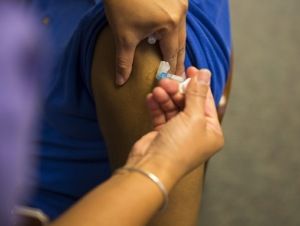News
Flu death toll in Denmark higher than normal
This article is more than 7 years old.
More people than usual died as a result of the 2017-18 influenza epidemic

Vaccination is still by far the best weapon against flu (photo: Cpl Jackeline Perez Rivera)
Not since 2010 have so many Danes died as a direct result of catching the flu. According to figures released by the Statens Serum Institute (SSI), 1,644 people – primarily elderly people over the age of 65 – were killed off by the epidemic.
READ ALSO: Worst ever flu season in Denmark
Unusually, the dominant virus was a type of Influenza B called Yamagata, although there were some instances of influenza A towards the end of the season.
“Influenza B often comes at the tail-end of the season after Influenza A and normally does not lead to hospitalisation or deaths among the elderly,” said senior doctor Tyra Grove Krause from SSI
Another contributing factor to the high death rate was that the vaccine in use was not as effective as expected. This was because the type of Influenza B virus in the vaccine was not the same as the one in circulation.
A little jab
Approximately 95 percent of the patients admitted to hospital with influenza were either elderly people or those with health issues to start with, such as chronic illnesses.
Although 600,000 people are vaccinated every year, it turned out that 63 percent of those hospitalised had not been inoculated with the free vaccine.
“Even though the vaccine was not as effective as usual, vaccines are still the best weapon we have against influenza,” added Krause.
Next year’s vaccine will also not contain the B form of Influenza because the experts don’t expect that it will be in circulation again as the infection level was so widespread throughout the population.










































